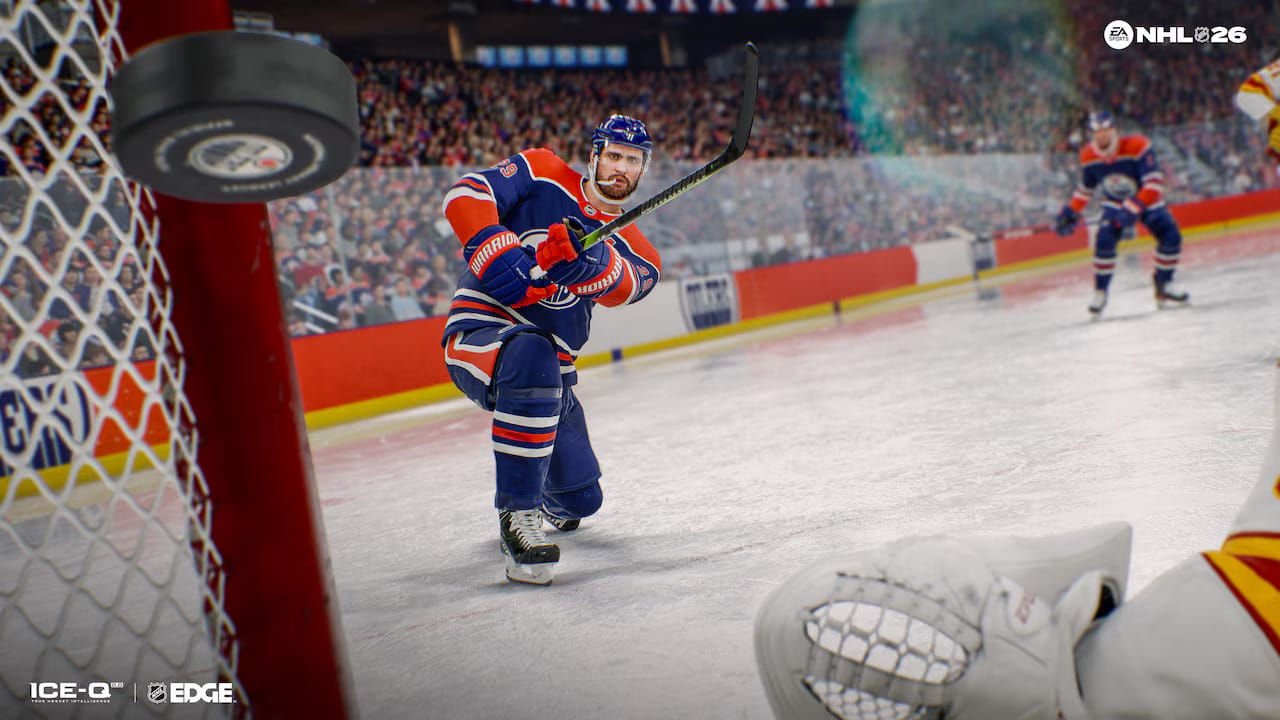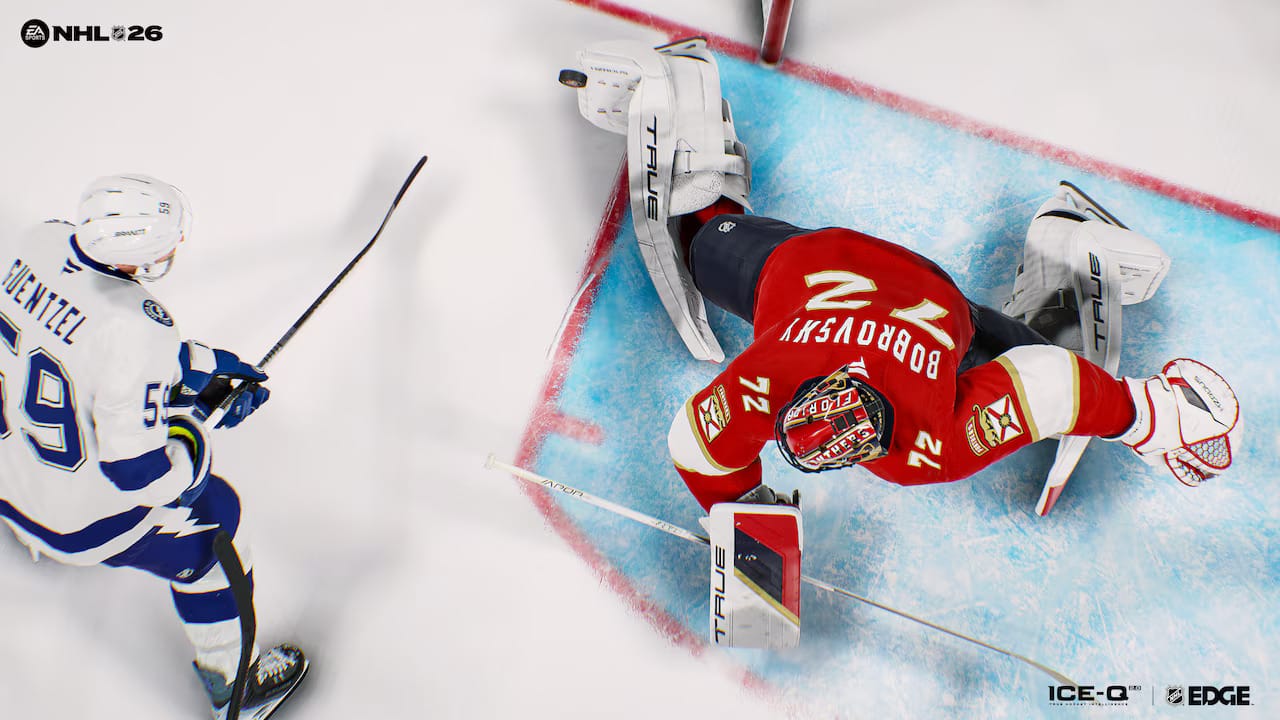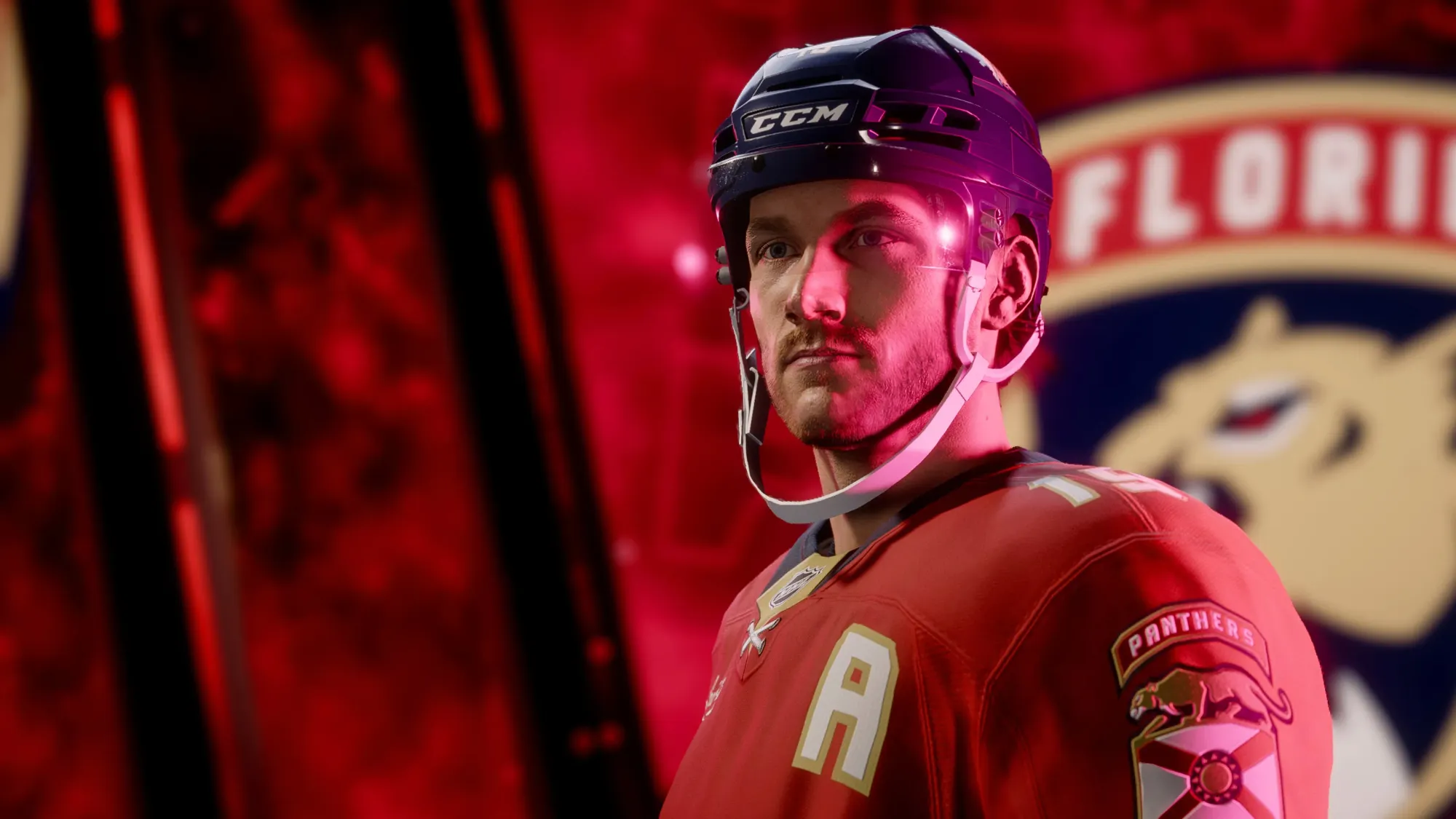NHL 26 Review

After years of incremental updates, NHL 26 finally feels like the bold leap forward the series has been waiting for. Powered by the impressive new ICE-Q 2.0 engine, this year’s installment doesn’t just refine the experience; it redefines it. Every stride, save, and slapshot carries more nuance and realism, turning what once felt like routine simulation into something that resembles the true rhythm of real-world hockey.
Where past entries struggled to find a balance between simulation and fun, NHL 26 confidently embraces both. The result is a stunning, fast-paced, and intelligent hockey experience that captures the sport’s intensity better than ever before.

The Power of ICE-Q 2.0
The new ICE-Q 2.0 system is the foundation of everything that makes NHL 26 special. Built around authentic NHL Edge tracking data, it injects individuality into every player on the ice. Acceleration, top speed, slapshot power, and wrist-shot accuracy now reflect real-life statistics, giving players distinct personalities that you can feel immediately.
Superstars finally play like superstars. Connor McDavid explodes with raw acceleration that few defenders can contain, while Alexander Ovechkin’s slapshot thunders with terrifying precision. This new sense of player differentiation brings a layer of authenticity that the series has long needed. Even lesser-known players feel distinct thanks to more than twenty unique tendencies that influence how they behave on the ice. From skating patterns to shooting preferences, these subtle details give every team its own identity and strategy.
The on-ice product feels smoother and more lifelike than ever. Player movement is tighter, transitions between animations are seamless, and skating captures the weight and flow of professional hockey. The game is also visually stunning, with some of the most realistic rinks, lighting, and crowd reactions the series has seen to date. The presentation evokes real broadcasts, and the expanded replay insights under the ICE-Q suite highlight advanced stats like skating speed, shot power, and save percentage zones, offering fans a deeper appreciation for the sport’s analytics.

Goaltenders Finally Steal the Show
For years, goaltending has been the weakest link in the NHL series. NHL 26 finally addresses this with the Goalie Crease Control System, a complete overhaul that makes netminders smarter, more reactive, and far more believable.
Goalies now read plays with a human-like awareness, adjusting positioning and posture based on puck trajectory and player movement. Their close-range saves feel natural, their poke checks have purpose, and their overall presence between the pipes carries new weight. It’s a joy to see a goalie track a deflection and sprawl for a save that looks spontaneous rather than scripted.
This new intelligence changes how you approach offence. Gone are the days of easily exploiting AI weaknesses. Scoring requires creativity, timing, and patience—just like real hockey. It’s a massive improvement and arguably one of the best AI updates in any recent sports title.
That said, not every physical interaction carries the same authenticity. Body checks still lack the bone-crunching weight that long-time fans remember. Collisions can feel underwhelming, robbing certain hits of their intensity. It doesn’t break the flow of play, but it’s noticeable in a game that gets so much else right.

Be A Pro Finally Has Purpose
The Be A Pro mode in NHL 26 has received its most meaningful overhaul in years. No longer a lifeless sequence of games and cutscenes, it now feels like a real career journey. You begin at the World Junior Championships, representing your country and setting the stage for your draft stock. The atmosphere is electric, hearing the crowd roar as you don your national colours adds a layer of pride and tension that previous entries never captured.
After your performance on the world stage, you move on to the Memorial Cup Championship, where scouts evaluate your potential before the draft. This part of the game shines thanks to its presentation and storytelling, even if not every performance lands perfectly. Having Macklin Celebrini appear as your mentor, fully voiced, adds a nice touch of realism, though his delivery can occasionally feel stilted. Still, the ambition behind the feature is commendable.
Dialogue choices now matter. Conversations with your agent, teammates, and coaches influence your reputation and relationships, affecting your brand image, management trust, and locker-room chemistry. Each decision has weight, shaping how your career unfolds and what opportunities open up.
Energy management introduces a new wrinkle, you need to rest strategically between games to keep your player performing at their best. It’s a mechanic borrowed from other EA Sports titles and might feel unnecessary to some, but it does add a layer of depth that pushes you to think like a real athlete managing fatigue.
All of this culminates in the NHL Draft, which now feels like a genuine milestone. You can let fate decide your team or influence your selection through dialogue, adding a touch of role-playing flair. The presentation around the draft is more polished than ever, and while it still isn’t perfect, it’s leagues better than what came before.

The Evolving World of Hockey Ultimate Team
For those who thrive on online competition, Hockey Ultimate Team (HUT) returns with meaningful upgrades. HUT Seasons, Ranked Competitive Matches, and the new HUT Cup Chase mode keep the experience fresh and rewarding.
Collecting Heroes and Icons cards adds nostalgia and variety, while Seasonal Captain Chemistries encourage creative lineup building. These small but important changes make HUT more engaging for both casual and competitive players. The matchmaking feels smoother, and rewards are better aligned with time investment, though long-term balance will be key in sustaining momentum throughout the year.

On-Ice Performance and Realism
Beyond its modes and structure, NHL 26 simply feels incredible to play. The sense of speed is exhilarating, transitions between skating states are fluid, and every shot and save looks natural. Goalie AI feels more intelligent than ever, reacting instinctively to rebounds and traffic around the crease. The presentation, from camera angles to lighting effects, amplifies the drama of every match.
However, some character models still fall short of photorealism. Facial details can look dated in replays, and certain animations lack the refinement seen in EA’s FIFA or Madden series. Hits, while visually improved, still need that extra punch to fully sell the physicality of hockey.
Despite these minor drawbacks, the gameplay remains exceptional. Matches feel competitive and thrilling, and the balance between offence and defence finally feels fair. Whether you are playing offline or online, NHL 26 delivers consistent performance with stable frame rates and minimal latency.

Final Verdict
NHL 26 is a triumph of authenticity, atmosphere, and intelligent design. The ICE-Q 2.0 engine elevates the series to new heights, giving every player a unique identity and making every shift feel purposeful. The smarter goalies, refined skating, and vastly improved Be A Pro mode show a developer willing to listen to its audience and push the sport forward.
It’s not flawless. Body checks lack impact, and some character models need more polish. But these small blemishes do little to overshadow what is easily the most complete and enjoyable NHL experience in years.
EA Sports has finally found the right formula for a game that feels alive, rewarding, and unmistakably hockey. For veterans, it’s a long-awaited return to form. For newcomers, it’s the perfect entry point into the world’s fastest game.
With ICE-Q 2.0 at its core, NHL 26 delivers smarter AI, more authentic skating, and a Be A Pro mode that finally feels meaningful. While a few visual shortcomings remain, the combination of realism, depth, and pure hockey excitement makes this one of the best entries in the series’ modern era.

Reviewed on Xbox Series S
